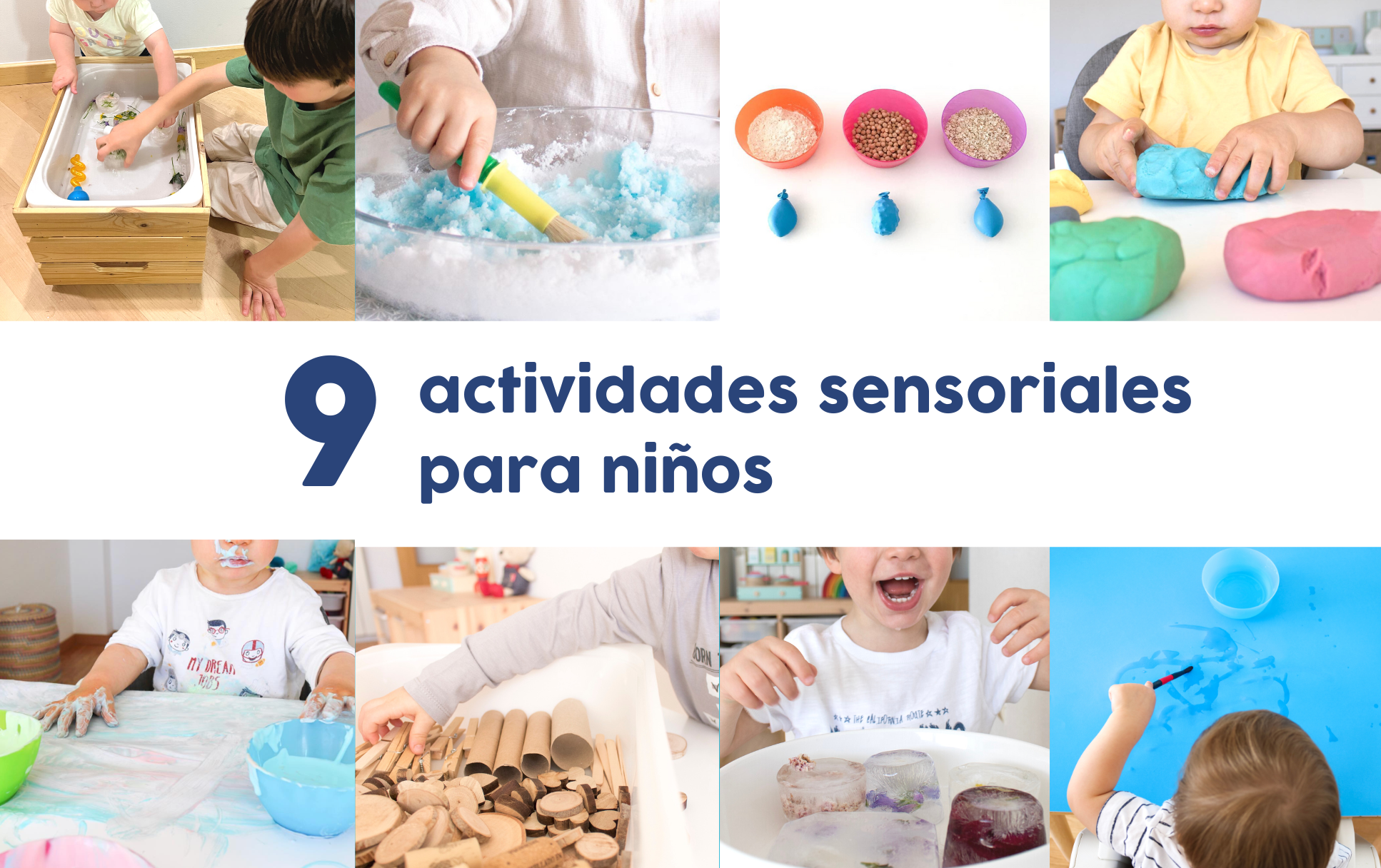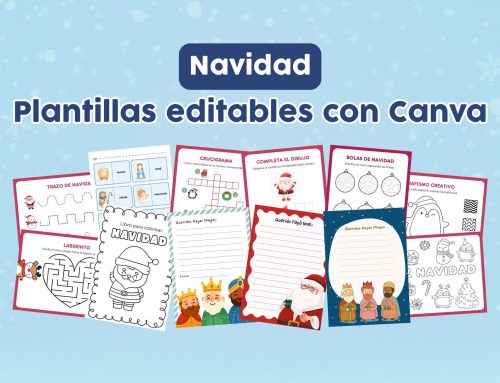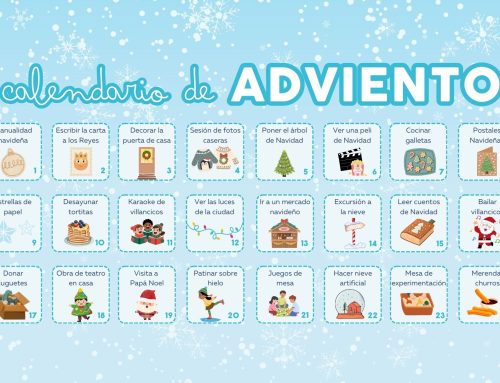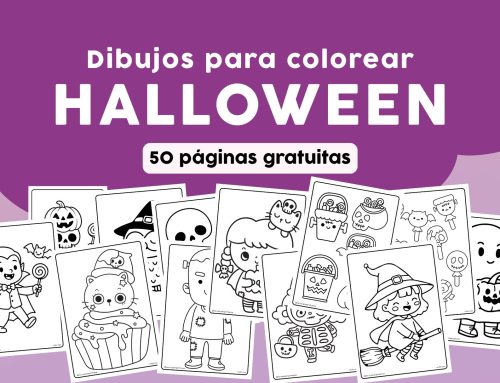A través del juego y la manipulación, los niños estimulan su curiosidad innata mientras se sumergen en un océano de texturas, colores, olores y sonidos. Estas experiencias sensoriales no solo generan momentos de diversión y risas, sino que también desempeñan un papel crucial en su desarrollo cognitivo, emocional y social.
En este post te hablo de la importancia de las actividades sensoriales para los niños, destacando los beneficios que aportan y te ofrezco 9 ideas de actividades para involucrar a los pequeños en un mundo de aprendizaje multisensorial.
¡Únete a mi canal de Telegram para no perderte nada! 😊
Instagram para familias: educación positiva y actividades infantiles 💛
¡Nuevo! Instagram para profesores: recursos educativos y herramientas TIC 👩🏻🏫
Beneficios de las actividades sensoriales:
Las actividades sensoriales tienen un impacto en el desarrollo integral de los niños, proporcionándoles oportunidades para aprender y crecer de manera divertida y significativa. Algunos de los beneficios más destacados incluyen:
- Exploración sensorial: los niños experimentan el mundo a través de sus sentidos. Las actividades sensoriales les permiten explorar diferentes sensaciones táctiles, visuales, olfativas y auditivas, lo que enriquece su comprensión del entorno y agudiza sus sentidos.
- Regulación emocional: muchas actividades sensoriales involucran el uso de materiales relajantes, como la plastilina casera o la pintura con los dedos. Estos elementos pueden ayudar a los niños a relajarse y expresar emociones de manera saludable.
- Desarrollo de habilidades motoras: al manipular objetos y participar en actividades táctiles, los niños perfeccionan sus habilidades motoras finas y gruesas. Esto les permite mejorar su coordinación mano-ojo, destreza manual y equilibrio.
- Estímulo creativo: al brindar a los niños la oportunidad de experimentar con colores, texturas y formas, las actividades sensoriales estimulan su creatividad y pensamiento imaginativo. Pintar con las manos, moldear plastilina y crear collages sensoriales son formas excelentes de fomentar la expresión artística.
- Socialización y comunicación: participar en actividades sensoriales en entornos grupales fomenta la interacción social y la comunicación. Los niños pueden compartir sus descubrimientos, cooperar en proyectos y aprender a respetar las ideas y preferencias de los demás.
9 actividades sensoriales para niños
1. Base sensorial con garbanzos de colores
En una bolsita hermética, coloca unas gotas de pintura (o colorante alimentario) y varios garbanzos crudos (o cualquier legumbre cruda que tengas en casa, pasta o arroz).
Cierra bien la bolsa y mezcla hasta que quede bien integrado. Después, coloca los garbanzos en una superficie plana hasta que seque completamente la pintura. Una vez seco, ¡ya podremos jugar!
Este material se conserva bien y es muy versátil: los niños pueden jugar a clasificar por color o cantidades, realizar trasvases de un recipiente a otro, utilizarlo como base para bandejas sensoriales o manualidades… o simplemente los ponemos dentro de un recipiente y dejamos que jueguen libremente o lo utilicen como un elemento más del juego simbólico.
2. Globos con texturas
Con estos globos sensoriales, los pequeños se familiarizarán con diferentes texturas. Puedes crearlos con varios elementos: harina, lentejas, legumbres, bolitas de hielo…
Con la ayuda de un embudo, coloca los elementos dentro del globo y átales bien.
Los más pequeños disfrutarán manipulando los globos, comprobando las diferentes flexibilidades, oyendo los ruidos cuando los estrechan Con niños mayores pueden jugar a adivinar de qué están rellenos, o comprobar si flotan en el agua, por ejemplo.
3. Plastilina natural
Esta plastilina está hecha únicamente con ingredientes naturales, así que es apta para todas las edades, también los más pequeños de la casa que si se llevan un pedacito en la boca, no pasará nada.
Para prepararla, coloca en un cuenco: 500 ml de agua, 250 g de sal, 530 g de harina, 30 ml de aceite y una cucharadita de levadura en polvo.
Cuando los ingredientes estén bastante integrados, amasa directamente con las manos hasta obtener la textura deseada. Si queda demasiado líquida, añade más harina; si queda seca, añade agua.
Una vez enfriada la masa, la dividimos en porciones para incorporar los diferentes colorantes alimenticios (te recomiendo que dé este paso con guantes de látex!). Amasamos bien hasta que el color sea homogéneo.
Por último y lo más importante… ¡a jugar y pasarlo genial!
4. Pintura casera comestible
Esta pintura está hecha con ingredientes naturales, así que es apto para bebés que se lo ponen todo en boca. Para hacer esta pintura sólo necesita un yogur griego y unas gotitas de colorante alimentario.
5. Material desestructurado
Para realizar esta actividad necesitarás elementos naturales o material reciclado: piedras, piñas, conchas, tubos de cartón del papel de cocina, tapones de corcho, palitos de helado…
Coloca todos los elementos en una bandeja a la vista del niño, sin intención ni propuesta concreta alguna. Será la criatura quien decide cuándo y cómo quiere jugar, sin instrucciones, con libertad y juego libre. Con la presencia y mirada del adulto para asegurar su seguridad, por supuesto.
Los materiales desestructurados (aquellos elementos que no tienen una finalidad concreta por sí mismos) favorecen el juego libre, la imaginación y la creatividad. Y es que, a menudo, las propuestas más sencillas son las más divertidas, ¿no?
6. Flores congeladas
Aprovechad la próxima salida al campo para recoger unas cuantas flores. Al llegar a casa colocadlas en cubiteras, cubrirlas de agua y ¡al congelador! Al día siguiente, los niños descubrirán cómo el agua ha pasado de estado líquido a sólido.
Los pequeños pasarán un buen rato jugando y descubriendo el frío, la textura de la flor cuando se derrite el hielo, las manos mojadas…
7. Pintura helada
Llena de agua unas cubiteras, añade unas gotitas de colorante y mezcla bien. Coloca unos palillos de helado y llévalo al congelador. Cuando esté congelado, prepara una cartulina grande y podrás disfrutar de una tarde de dibujo original y creativa.
8. Pintamos con agua
Una actividad ideal para aquellos días en los que no tiene ganas de ensuciar nada. Sólo necesita una cartulina de color, un cuenco con agua y un pincel. ¡Más fácil, imposible!
9. Nieve artificial
¿Nieve en verano? ¿Por qué no? Sólo se necesitan dos ingredientes: 3 vasos de agua y 1 de bicarbonato.













